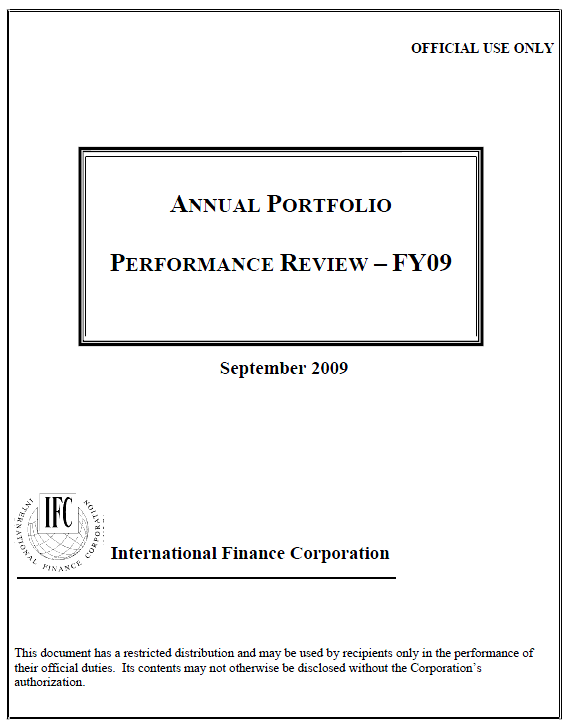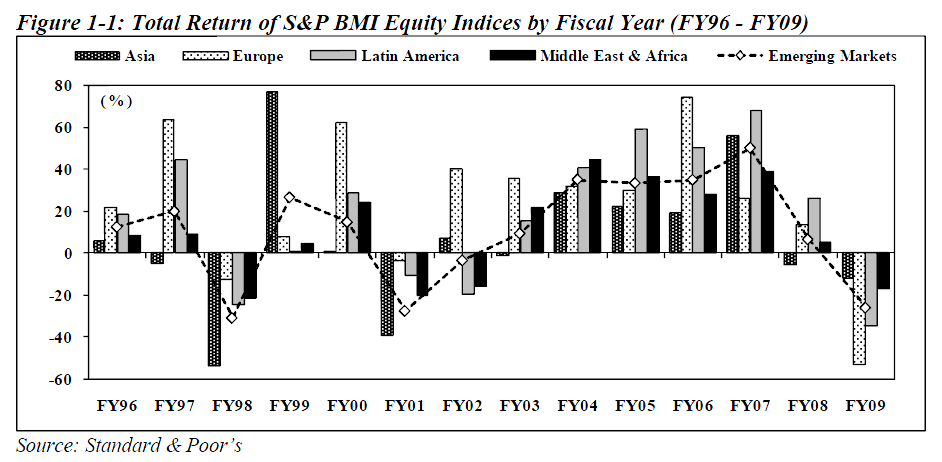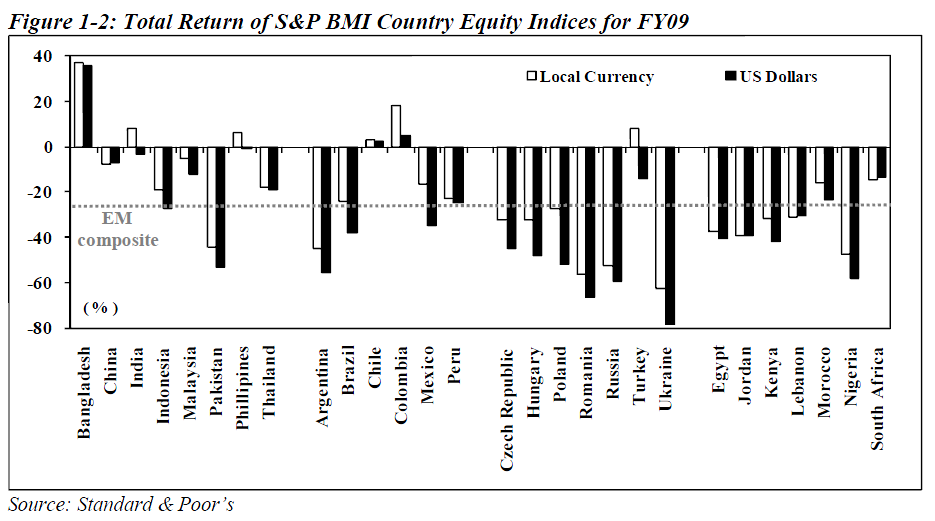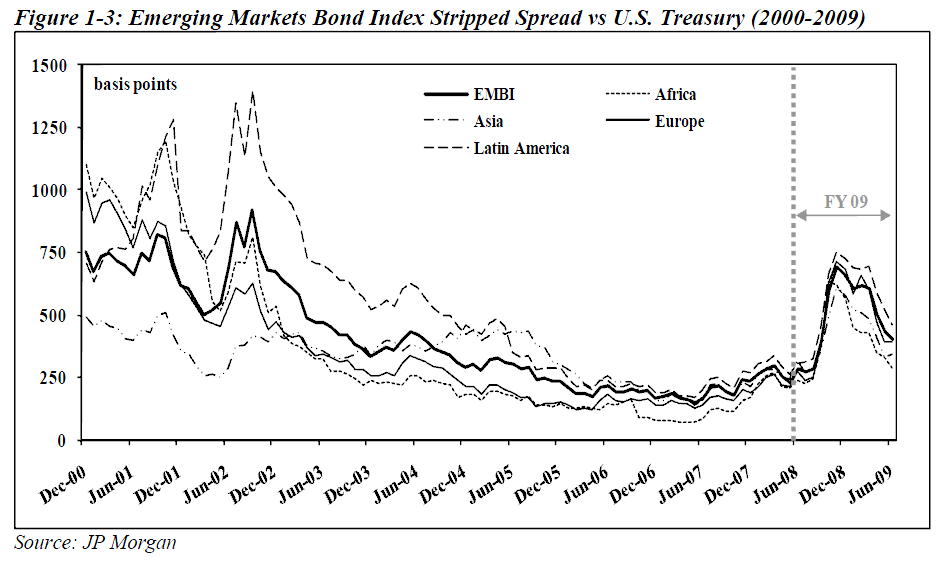 IFC/R2009-0227
IFC/R2009-0227
- 121 pages
- For Official Use Only
- August 25, 2009
INTRODUCTION
This report provides (i) a brief overview of IFC’s investment environment and outlook for portfolio performance, (ii) a comprehensive review of IFC’s investment portfolio and performance and (iii) a review of the development effectiveness of IFC’s portfolio. The report should be viewed as a snapshot of portfolio trends as of the end of FY09 which will be supplemented throughout the year by IFC’s Quarterly Report to the Board, as well as other regular reports including IFC’s Annual Report, IFC’s Annual Report on Financial Risk Management and Capital Adequacy, IFC’s Business Plan and Budget, and IFC’s Road Map.
Section I of the report provides an overview of emerging market investment conditions. New to
this section is a brief discussion of portfolio performance going forward. Section II examines changes in
the size and composition of the portfolio and provides information on the most important portfolio trends
of the fiscal year. Section III analyzes equity portfolio trends, performance, and return volatility and
Section IV focuses on the loan and guarantee portfolio. Section V provides details on the development
effectiveness of IFC’s portfolio.This year’s report contains three annexes and three appendices. Annex A provides a summary of
IFC policies and procedures with respect to Portfolio Management. Annex B lists IFC’s committed
portfolio by country and Annex C provides details of key portfolio performance trends in charts and
tables. Appendix I lists new approvals in FY09, Appendix II lists new commitments, and Appendix III
provides details on cancellations and prepayments.Development results presented in Section V are based on data gathered through IFC’s
Development Outcome Tracking System, known as DOTS, which covers all active companies in the IFC
portfolio as well as all new business. The section highlights that development results for the Corporation
remained strong in FY09. Projects with high development results exceeded 70% for the past two years.
This year’s results compares favorably to the long run average of about 60% (prior to the past two years)
and the long run target of 65%. The financial crisis did negatively affect development results in hard-hit
Europe and Central Asia, but development results in Latin America improved substantially. As in prior
years, analysis shows that repeat projects and projects with larger IFC investments have a higher
likelihood of achieving better development results. In Sub-Saharan Africa, for example, weighted results
were 25% points higher than unweighted results, making Sub-Saharan Africa the most successful region when weighting development result by the size of investments.In CY2008, IFC clients provided 2.1 million jobs, served 5.5 million health patients, and helped
educate 1.2 million students. Our clients reached over 200 million water, power, and gas customers,
provided phone connections to 220 million people, and provide 9.8 million loans to micro, small and
medium-sized enterprises.The global financial crisis, which originated in the developed markets and spread rapidly to
developing markets, significantly affected IFC’s investment portfolio during the year. New investment
activity slowed significantly after the crisis unfolded in the first quarter of the fiscal year due to loss of
project pipeline. The Corporation responded to the crisis with a series of initiatives to meet client needs
in key areas, in particular, trade finance and bank capitalization. Despite the crisis, the Corporation
remained focused on growing its investment portfolio in IDA countries.In FY09, new commitments totaled $10.5 billion, a 7% decline from FY08. New IDA country
commitments, however, grew strongly with new commitments in IDA countries up 25% to $4.4 billion,
an all time high. IDA commitments represented 42% of all commitments, up from a 31% share in FY08;
moreover, by project count, IDA projects represented more than 50% of total projects. On a regional basis, Sub-Saharan Africa was the only region to record an increase in new commitments with the volume of new commitments growing 32% over FY08. Although the Southern Europe & Central Asia region recorded a decline of almost 24% in new commitments, central Asian countries within the region
continued to grow strongly, with new commitments increasing more than 80% to $252 million.
Guarantees accounted for 24% of total new commitments as compared to 16% in FY08, largely due to
increased demand for trade finance guarantees. Trade guarantees grew 67% to $2,380 million in FY09
and represented 96% of total guarantee commitments.The IFC portfolio became less concentrated on a country basis in FY09 with the top ten countries
representing 48% of the portfolio on a committed basis, down from 51% in FY08. The top ten countries
in the disbursed and executed portfolio represented 52% of the total portfolio as compared to 57% in
FY08.Droppages and cancellations more than doubled to $2,971 million with the increase underpinned
by the difficult economic environment. Loan prepayments slowed significantly, declining 57% to $490
million, as the financial crisis limited client access to alternative finance. The ratio of prepayments to the
disbursed loan portfolio was less than 3%, down from 7% in FY08 and 13% in FY06.
Gross portfolio income declined 16% to $2.5 billion and the gross return on the portfolio after
Fair Value Option losses and loss provisions was 3.1%. Principal outstanding on non-accruing loans
increased 24% to $457 million, but represented just 2.5% of disbursed principal at year end, up from
2.2% in FY08. With respect to the equity portfolio, the real IRR on the active equity portfolio was
15.0%, down from 27.6% in FY08.…



